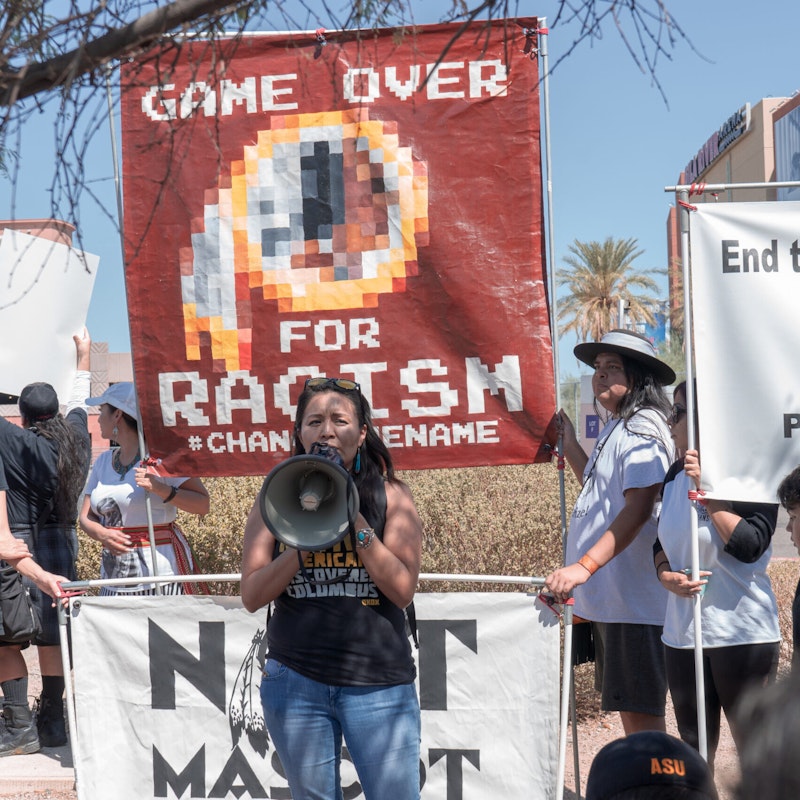One of my most vivid memories as a sports fan was Game 6 of the 1991 World Series, in Minneapolis. I was sitting in the upper deck of the Metrodome—in front of a large contingent of visiting Braves fans, who spent the game wearing headdresses, banging drums, and chanting the Tomahawk Chop chant. After Kirby Puckett won the game with a home run in the ninth inning to force Game 7, I'll never forget walking by a large protest against the Braves mascot iconography by the American Indian Movement, founded in Minneapolis in the late-1960s.
A compelling new documentary, Imagining the Indian, follows the story of the multi-decade fight against sports team nicknames, which gained some major victories in recent years with the retirements of the Washington Redskins and Cleveland Indians names. However, as evidenced by the Kansas City Chiefs recently winning the Super Bowl to the thundering sound of the Tomahawk Chop chant, the fight’s far from over.
The film doesn’t depict that 1991 World Series demonstration, although we do see a protest against the Washington Redskins, who appeared in Super Bowl XXVI at the same stadium just a few months later, and we learn about how that particular franchise, owned for years by segregationist George Preston Marshall, has an ugly history that goes back far.
Imagining the Indian makes a convincing case that, even before the modern-day understanding of “cultural appropriation,” it was clear that there was something gross about sports teams naming themselves after racial slurs, and about sports fans donning headdresses and warpaint while performing “tribal chants” at the stadium.
Co-directed by Ben West and Aviva Kempner—with longtime ESPN hand Kevin Blackistone serving as a producer and co-writer— the film goes far beyond sports, delving into the disgraceful way that American Indians have been treated by popular culture over the years.
As articulated by numerous talking heads in the film, most of the pop culture references to American Indians throughout history, whether it's cartoons, Westerns, or TV commercials, have shown little resemblance to anything having to do with actual Native-Americans, usually been created without any input from such people. (That’s the “inventing” of the title.)
The participants are a bit more mixed on their thoughts about Kevin Costner’s film Dances With Wolves, which at least included some native actors and language, although it was a white savior narrative. The film also follows the career of poet and activist Suzan Shown Harjo, who can be found at just about every juncture of this fight over many decades.
Unfortunately, the film leaves out any references to the treatment of American Indians in the world of professional wrestling, in which many "Indian" competitors, like Chief Jay Strongbow, were not native.
We’re also shown Sacheen Littlefeather's famous non-acceptance of Marlon Brando's Oscar in 1973, although the film doesn’t mention the reports in the last year that Littlefeather may have fabricated her native heritage, and that the long-told story about John Wayne needing to be held back by six security guards during her speech almost certainly isn't true either. The recent trend of people faking American Indian heritage could probably justify an entire documentary.
Imagining the Indian, which opens in New York and Los Angeles Friday before rolling out over the next few weeks, offers well-chosen interview subjects, many of whom are native activists and people who’ve been part of this fight for years. Also included is the 92-year-old sportswriter Jerry Izenberg, who once interviewed Jim Thorpe.

